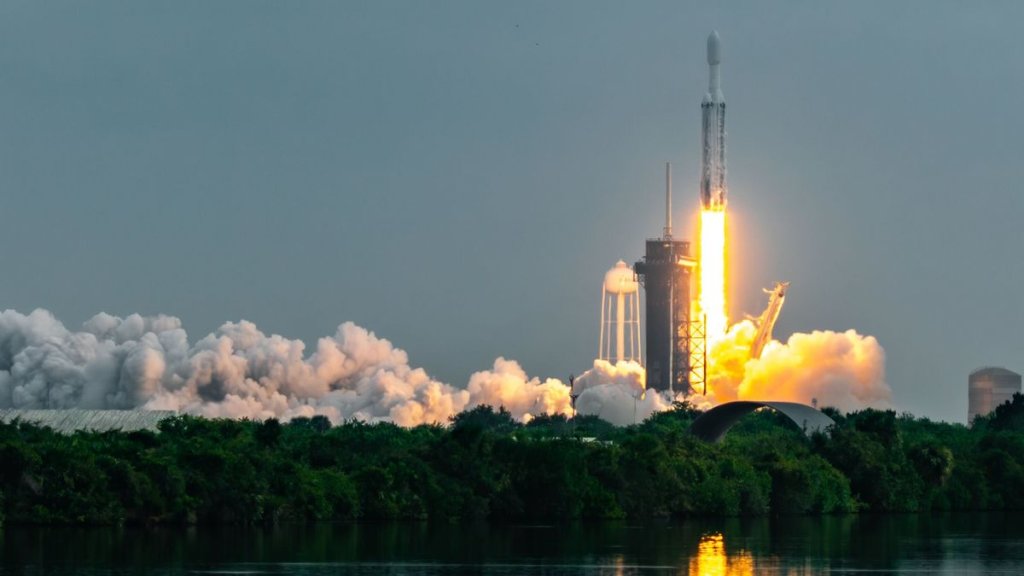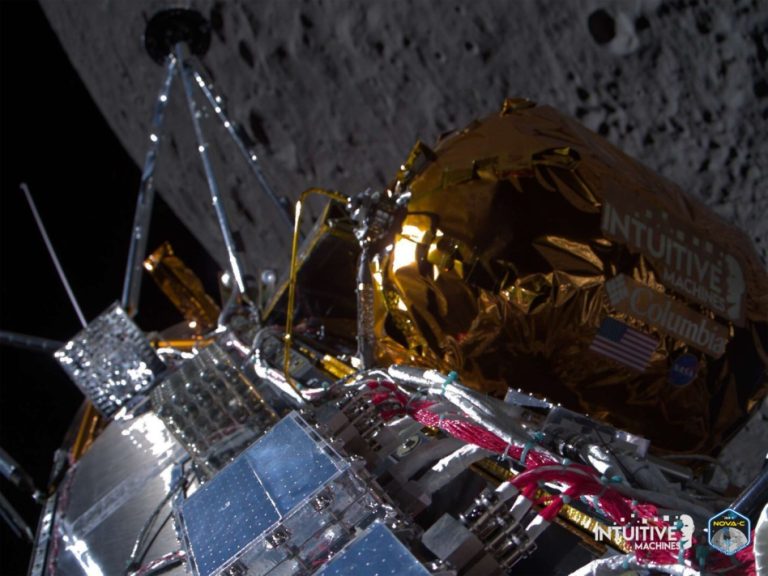
GOES-U satellite launch this month will bring a solar activity monitor to space (Image Credit: Space.com)
When it comes to tools, the more they are used, the less reliable they can get.
And, sure enough, while the Large Angle and Spectrometric Coronagraph Experiment (LASCO) instrument on NASA and the European Space Agency‘s SOHO (Solar and Heliospheric Observatory) spacecraft did an excellent job providing us images during the recent powerful geomagnetic solar storms, it’s getting old.
A coronagraph is a specialized instrument designed to block out the light of the sun so researchers can glimpse the burning star’s hot, thin and outermost layer called the corona. Space weather forecasters can therefore use coronagraphs to spot solar flares coming from sunspots and accompanying coronal mass ejections (CMEs). However, currently, LASCO is on its own in space as there’s no backup coronagraph instrument available for scientists to keep an eye on the sun’s activity.
“Coronagraph images are vital for us to detect the CME, measure it, put the information into a model, and from the model predict the arrival if it’s going to impact Earth,” Bill Murtagh, program coordinator for the National Oceanic and Atmospheric Administration’s (NOAA) Space Weather Prediction Center (SWPC), told Space.com “The coronagraph we’ve been relying on (LASCO) is not available a lot of times because it’s a research instrument. It’s a single point of failure so, if it’s gone tomorrow, we would be in a bad situation.”
Related: Powerful new NOAA weather satellite set for June launch atop SpaceX Falcon Heavy
The only other technology out there that studies the sun’s CMEs is NASA’s Solar Terrestrial Relations Observatory (STEREO), but of the twin spacecraft involved with this mission, only one remains operational and rarely passes between the Earth and sun.
SOHO launched to space in December of 1995 and became operational in April of 1996. On it is the LASCO instrument, which contains three coronagraphs that take pictures of the solar corona. The main purpose of the mission was to do experimental research and not provide real-time updates on the sun’s activity. The data that comes in is thus not continuous, and the aging instrument can see when there’s activity happening, but can’t characterize what exactly is going on.
The downlinks of data from LASCO through NASA’s Deep Space Network creates holes in telling the sun’s story as well, to be fair, as there can be gaps in data of up to eight or more hours at a time. This lag can pose issues with forecasting arrival times of CMEs and alert forecasters if there are multiple ones that follow an initial flare. The instrument has also taken a beating over its last 20 or so years in operation thanks to solar activity coming off the sun, especially when it comes to its solar panels. Energetic particles continue to degrade these panels and scientists say a recent check on the instruments show they only have enough power to last into 2026.
Whether LASCO goes offline permanently or temporarily, considering its age and limited lifetime, scientists remain concerned about its reliability.
“Imagine if that happened during the solar storms, we would have been blind as to what was coming towards us. The coronagraph is our early warning detection system,” Elsayed Talaat, the NOAA’s Director of the Office of Space Weather Observations at the National Environmental Satellite, Data, and Information Service (NESDIS), told Space.com. “As we see these storms come off the sun, [coronagraphs] tell us that something large is coming towards us and we input the characteristics of that coronal mass ejection into our models and project them out to see if there’s going to be an impact here.”
Next month, when the NOAA’s GOES-U satellite launches to space, aboard it will be the Naval Research Laboratory’s Compact Coronagraph-1 (CCOR-1). This will be the first operational coronagraph for the U.S. as it will be managed by NASA and funded and operated by the NOAA; it is also expected to send back data much faster with more detailed information about CMEs, including how big they are, the speed at which they are traveling, and their densities. This information is important for forecasters to issue watches at least one day out ahead of possible geomagnetic storm conditions.
“These observations are critical to the Space Weather Prediction Center’s (SWPC) capability to warn and forecast. Without these spaceborne observations, we would be blind to where activity is on the sunspots … we need to make those measurements in space,” Talaat said. “Because we’re looking at the sun in the ultraviolet and x-ray frequencies, which we can’t see from the ground, space allows us to see it 24/7. We also need to make the measurements of the coronal mass ejections in space as well to get an unobstructed view of these large explosions off the sun.”
According to a NOAA release, scientists will be able to have imagery delivered within only 30 minutes of acquisition versus the eight hours it takes LASCO. Images will also come through the device much cleaner as it is built to reduce impacts that could be associated with bigger solar storms like the creation of white specks or “snow” on the detector. This was a problem scientists recently had when energetic particles from a solar storm hit the Curiosity rover’s navigation camera on Mars, making the image fuzzy.
“We will have for the first time the ability to get an artificial eclipse, a total eclipse of the sun, every 30 minutes. That will provide us with a really good capability right now,” Talaat said. “It is going to be a better detector so we get a high resolution on the coronal mass ejections as well as the instrument is designed to be more resilient.”
LASCO’s research has been important in helping scientists better understand the sun’s atmosphere and impacts on space weather, but now that it’s nearing the end of its chapter, CCOR-1 is ready to begin a new one. And what better way to end this series of GOES satellites with the start of a new era for studying and forecasting weather in the great unknown.








